Gouache is a fantastic, opaque water soluble medium that is similar to watercolour in its working properties. The opacity of gouache gives the artist the flexibility to layer paint from dark to light, clean up edges, and correct mistakes. Gouache is a medium that allows for a little more spontaneity compared to regular transparent watercolour.
The gouache medium is arguably one of the easiest to learn. It’s easy to clean up and set up, to clean simply wash away paint with water. You also don’t need many supplies to get started, a few primary colours, a palette or something to mix on, some watercolour paper, a brush and you will be all set.
The quality of paint varies from brand to brand, so read on to find the perfect paint, the best supplies for your practice, some of the essential techniques, what a typical gouache painting process could look like and ultimately how to use gouache paint.
Disclaimer: Fine Art Tutorials is a reader supported site. When you make purchases through links on this site, we may earn a small commission at no extra cost to you.
What is gouache paint?
Gouache is a fast drying water soluble medium that is re-wettable when dry. Paint is made from pigment and a binder, which in most brands consists of gum arabic and may contain inert additives to increase the opacity of the paint like chalk. Gouache dries to a matte finish, which makes it suitable for creating scans and photographs for print.
The paint is fast drying, so painters will not be able to achieve smooth seamless gradients as they would with oils, but paint is re-wettable, so artists can work on colours for longer.
Add water to the paint to thin it, or add less water to achieve thicker strokes. Bear in mind that if paint is applied too thickly, it dries matte and forms a brittle film, which can be prone to cracking. So gouache works best with the addition of a little water. However, M. Graham paints have honey in the binder which prevents cracking.
Use gouache to create illustrative pieces of bright, block colours. Or layer the gouache with brush techniques to create texture and paintings that emulate the appearance of oil or acrylic. Some brands manufacture some more transparent colours that, when thinned with water, can create semi transparent washes.
Can gouache be used in mixed media artworks?
Gouache is versatile and can be used alongside other mediums. Use gouache with watercolour—watercolour will create transparent washes and glazes, whilst gouache will create solid block colours and white highlights. Read our guide to find out the differences between gouache and watercolour, if you’re not sure!
It can be used under pastel or over casein. Another great combination is watercolour pencil and gouache. Use the pencil for detail and line work, then cover large areas with gouache. Of course, gouache can also be used alongside marker pen, ink and other varieties of pencil.
Water resistance can be achieved by using acrylic gouache paints like Holbein acrylic gouache. This protects the painting from moisture, seals the artwork and creates separate colour layers.
What supplies do you need for gouache painting?

Gouache paint is relatively inexpensive compared to other painting mediums and you don’t need too many gouache supplies to get started. Gouache is water soluble, so you will need a cup of water and a few extras.
Best gouache paint for beginners
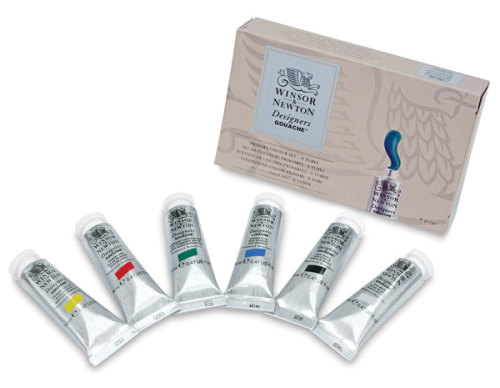
Winsor & Newton designer gouache is a fantastic option for beginners. The paint is reasonably priced relative to the quality and deals can often be found on their tubes and sets. The introductory set of 10 is a great place to start, as it provides a range of primary and earth tones to mix a large chromatic and value range. The lightfastness of the pigments isn’t as high as some of the higher end brands, but Winsor & Newton don’t use opacifiers in the colours, instead opacity is created by high pigment load. This means that some colours may be slightly more transparent than others.
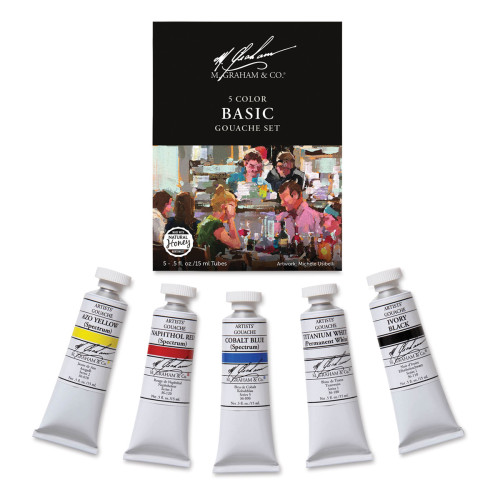
M. Graham is a professional gouache paint made for fine artists. Similar to Winsor & Newton, they refrain from using opacifiers in the mix and instead make paint opaque by increasing pigment load. This brand only uses the finest pigments and mostly makes paint colours with single pigments, giving artists the ability to create ultra clean mixes. The permanence of the paint is high, meaning that artists can make their work saleable using this paint. For a more comprehensive review of the best gouache paint, check out our guide.
Brushes
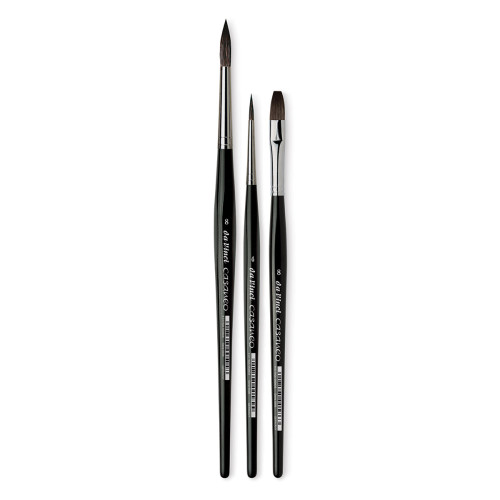
The Da Vinci Casaneo synthetic brushes are wonderfully soft, absorbent and springy—suitable for all manner of gouache painting techniques. Get them in large or small varieties, or travel varieties if you enjoy painting outdoors.

Escoda Versatil brushes are another synthetic option that can be used with watercolour, gouache, oil or acrylic. They are soft, but have a snap to them, making them suitable for low viscosity mediums like gouache. Escoda makes a liner brush, perfect for extra fine details and lines, like blades of grass, strands of hair, outlining, or lettering work and illustration work.
Kolinsky or synthetic gouache brushes are perhaps the best option for gouache paint. This is because they are soft and absorbent and able to work with runny paint, but they have a slight spring to them. So if you choose to use techniques like dry brushing that don’t require the brush to be loaded with water, the bristles will snap into place when dragged across the paper.
Surfaces
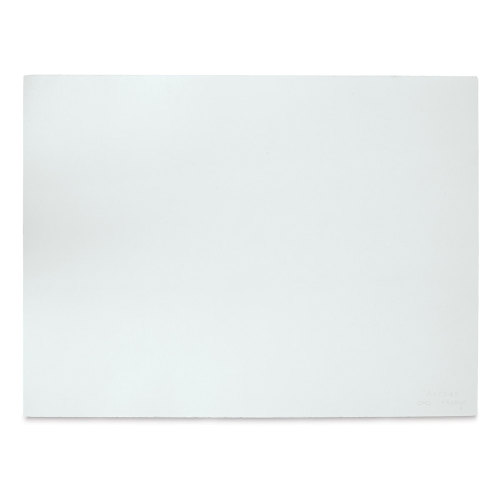
Watercolour papers by Arches are ultra high quality, thick and durable. The hot pressed variety is best for detail work, as the paper is smooth and the fibres will not obscure fine paint marks. If you are working with watercolour and gouache, a cold pressed paper is more absorbent and able to take heavier washes of colour. Cold pressed paper can be helpful in creating the illusion of detail, for example, dry brushing some colour over the textured paper can create broken marks that can emulate the texture of distant leaves.
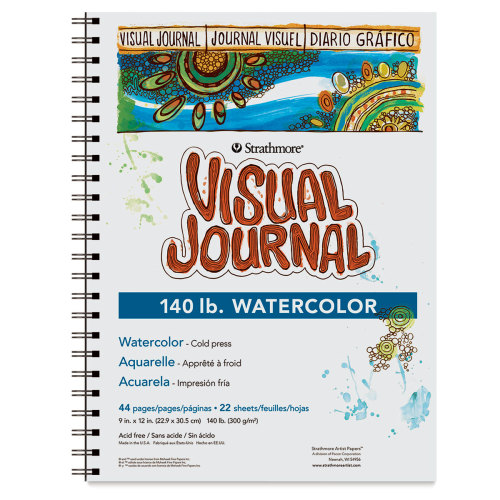
For artists that prefer working in a sketchbook, this Strathmore Visual journal comes in two paper weights, the 140lb being heavier and more able to take watery washes. It’s a high quality, leather and spiral bound book, that would be the perfect accompaniment to art class or plein air sketching.
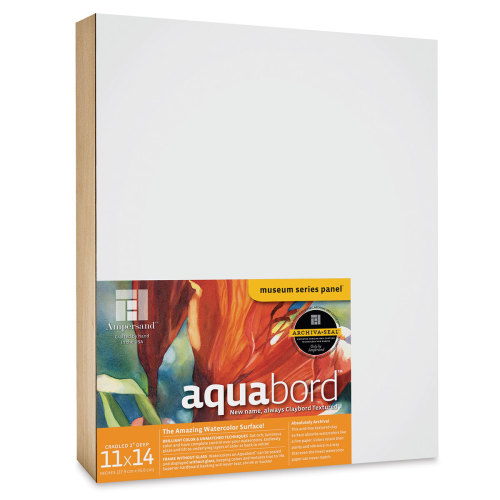
Another surface option for use with gouache is Aquabord. This is a thick panel that artists can paint on with watercolour or gouache. The benefit of working on a thick surface like this is that it won’t buckle under heavy washes and you don’t need to mount it before framing.
Use any kind of watercolour paper or watercolour sketchbook with gouache. The surface you choose should be absorbent. If you are wanting to keep and frame your paintings, or even sell them, choose to work on an artist grade acid-free paper. This will prevent the paper from degrading over time.
Palettes
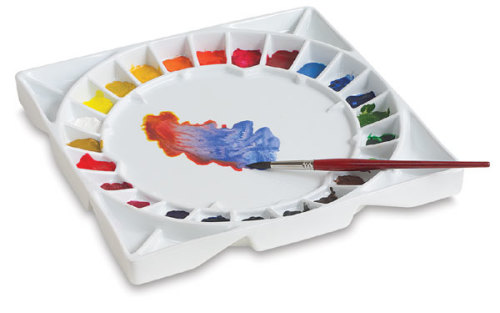
Use any watercolour palette with gouache. Ceramic palettes are a brilliant option for studio work. This palette is great as it has large sections for mixing and wells for squeezing tube colours into.
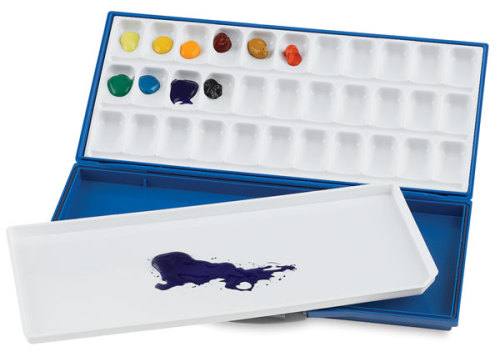
Plastic palettes are much cheaper and lightweight, but they are just as easy to clean. If you enjoy painting outdoors, get a portable palette. This palette by Mijello is sealable, so it will keep colours in place, with the added bonus of locking moisture in for longer.
Are gouache paints safe?
Gouache is one of the safest art mediums to use. This is because no thinners or solvents are required to clean materials, like with oils. The binder is gum arabic and brushes and palettes can be cleaned with water.
If you want to avoid using any toxic pigments, refrain from buying cadmiums, cobalts, barium yellow or iron oxide. There are safe alternatives to cadmium red and yellow provided by Winsor & Newton. However, these toxic pigments are fine to use if you are careful with handling them. Make sure to wear gloves while washing brushes. Also ensure that your hands are free from paint residue before touching food. If you have kids or pets in your studio or class, the advice would be to avoid using these pigments.
Another potentially hazardous material is fixative spray, that can be used as a final coat to protect gouache paintings. Make sure to use fixative sprays outside or in a space that is well ventilated.
How to mix colours with gouache

Beginners can start with a limited palette of colours, then learn how to mix pigments to create a full chromatic range of tones and hues.
For a limited palette, all that is required is primary red, primary yellow, primary blue a dark earth colour or black for shadow tones and white to create highlights. However, in paint form, it’s unusual to find pigments that correspond to primaries exactly. This is why most artists will diversify their palette by including a warm and cool version of each primary. This is called the split palette. For a comprehensive guide on colour mixing and colour palettes check out our guides on colour theory, colour mixing and limited palettes. Oil painting is used as an example in each of the guides, but the same principles can be applied to other painting mediums such as watercolour, acrylic and gouache.
Colour mixing and colour theory are perhaps some of the most challenging concepts to grasp when learning to paint. Once understood, artists’ skills improve rapidly. Having an awareness of how to mix a colour to match it from a scene can take art skills from beginner to intermediate level. This includes learning to neutralise colours, control colour temperature and value.
Gouache techniques
There are a multitude of different techniques you can use with gouache paint, here are some of the most basic techniques to try.
Wash

Thin the paint colour with some water and brush over the surface evenly to cover a large space. This is a basic technique that you will likely use often for applications like painting skies or backgrounds.
Dry brush
Dip the brush in some paint and dry the brush. Either absorb the excess moisture with a paper towel, or use the excess paint for some other details first. Once the brush is dry but still has pigment left on it, rub it over the paper to create texture. Dry brush to create the impression of choppy waves in distant ocean, or leaves on a tree. If you prefer portrait painting, use it to denote texture on hair or clothes.
How to paint with gouache: the gouache painting process
With opaque paint, artists have the option to paint with light colours over dark. This gives much more flexibility in layering the paint.
Bring your knowledge of gouache painting techniques and colour mixing together, by forming your own painting practice. I’ve outlined some steps artists take in the painting process, but you can customise it to suit your own preferences.
Staining the surface
Optionally, stain the surface to create an underpainting. Use water resistant acrylic gouache, casein, or watercolour paint. Working from a mid tone can bring benefits to the painting practice, it backlights the painting and it helps artists perceive value transitions more easily.
Start with a drawing
This is an optional step—but start with a drawing to map out your composition and how the different elements will fit together. By doing this, you can improve the accuracy and structure of the painting.
Draw with watercolour pencils, as they are water soluble, lines will dissolve as you paint over them.
Layering
You could start with a stained surface, then block in shapes and colours. It can be beneficial to start with the mid tones and gradually increase the contrast, by darkening shadows. Then add your highlights with the details at the end.
By blocking in broad shapes in the first stage of your painting, you can establish the tonal masses that appear throughout the painting. Then consecutive layers will involve refining the details. Start with the big shapes by looking at the composition of the scene as a whole, instead of focussing on any details too early. This will improve your observation skills and accuracy. Of course, the more you paint, the more you will refine your own personal process. There’s more than one way to complete a painting.
To make sure that you focus on the broad shapes in the first layer get a larger soft square shaped brush. This will encourage you to avoid focussing on the details too soon.
Increase opacity
Although generally gouache is an opaque medium, certain pigments of artist grade gouache paints tend not to be completely opaque. These artist grade manufacturers leave it to the artist to increase the opacity of a colour themselves with the addition of titanium white.
Make swatches of your colours first and note down the transparency and use this to your advantage while painting. Add titanium white to colours you want to appear more opaque on the paper. Or use the more semi transparent colours in a wash to create transparent shadows, softer details and atmospheric perspective. The learning curve of painting is in understanding the individual properties of different pigments and how to use them to create the intended effect.
Create texture
There are a number of ways to create texture in a painting without spending hours focussing on intricate details. For example, if you are working on cold pressed or rough paper, use the texture of the paper alongside a dry brush of colour to create broken marks. Create texture of the leaves of a distant bush or tree by roughly scumbling opaque colour on top of the block mass tone of the foliage.
Focus on edges
Look at your reference, or scene if you are painting from life. Try to describe how different elements relate to one another. Some edges will appear soft, where the colour of one landmark blurs into another. An example of this could be a hill in the distance, where the colour of top of the hill appears to blur slightly into the colour of the sky. Another example could be a far away tree, where the branches appear less defined and leaves are suffused with light from the sun.
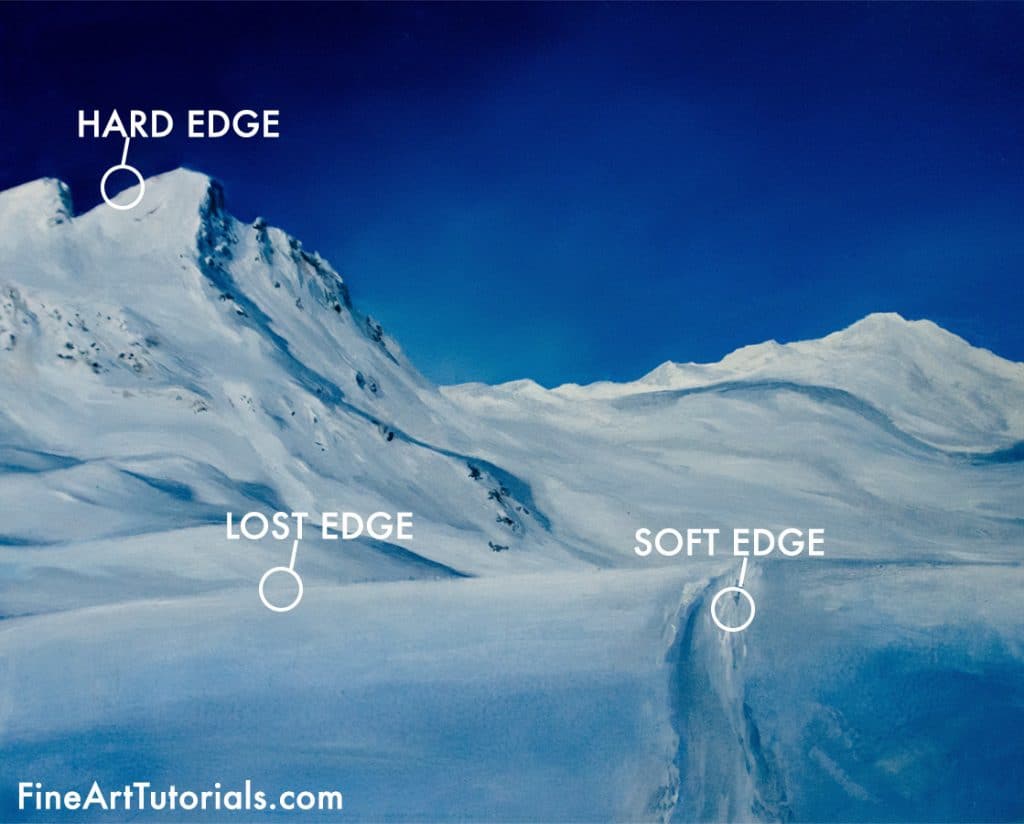
Create the impression of soft edges, by using the wet on wet technique, where you wet the paper then paint the details, for example, tree branches on the wet sky colour. Gouache dries quickly, so you will have to work fast to use the wet on wet technique. You could also create soft edges by painting transparently with watercolour alongside the gouache.
Hard edges are easier to create with gouache paint. A hard edge could be a side of a building in the foreground where the sun is being blocked. Or the mountain in the background of this oil painting.
Details and highlights
Leave the details and highlights until last. It’s important to remember the thing that attracted you to a scene was most probably the composition and how all the different elements marry together. So it is fine to take some artistic license and omit details where you see fit.
For fine details, thin the paint with water and use a fine brush, like a liner to draw thin long lines and tiny dots.
Tint colours with titanium white for highlights, this will also act to increase the opacity, so they can be layered on top of other colours.
What are the benefits of painting with gouache?
It’s a simple, straightforward and forgiving medium. Mistakes can be corrected easily, plus it’s super easy to clean. It’s a very immediate medium that is perhaps the easiest to learn for beginners. You can take gouache paint outdoors, travelling and abroad without too much fuss or preparation. Take gouache to art class or out and about with you to paint en plein air.
Gouache requires very few materials. All you need is a soft brush and a watercolour sketchbook. You don’t need mediums or to prime your surface before starting. You can also leave brushes and not have to worry about cleaning immediately as you would with acrylic or oil.
The paint medium is versatile, choose to use a combination of techniques to achieve a variety of effects, or use it in combination with other media such as watercolour. Make saleable professional quality work by choosing an artist quality paint such as M. Graham and an acid free surface like Aquabord or Arches paper. Gouache is also loved for its relative inexpensiveness, many artists use gouache for sketchbook work and to create compositional studies
Disadvantages of gouache
The paint isn’t as versatile or forgiving as oil or acrylic. Oil and acrylic have ultimate covering power, the ability to create thick textures and seamless blends. Whereas gouache behaves more closely to watercolour than any other medium.
The paint dries within minutes, so this makes painting gradients and blending hard work. Paint is re-wettable once dry, so you may have to use a fixative to protect artwork from moisture.
Gouache paint changes value when dry
Colours change in value from wet to dry. The general rule of thumb is that light colours will get lighter and dark colours will get darker. So keep this is mind and work from a more mid tone colour, let it dry and then gradually increase the contrast in the shadows and highlights.
How is gouache different from watercolour?
Are gouache and watercolour that different? The ingredients are much the same as watercolour paint, however the colours contain extra pigment to make the paint opaque. Some student grade brands use opacifiers such as chalk to make paint appear more opaque. Gouache can be used alongside watercolour—artists often use the two in conjunction with each other.
Watercolour shines in its ability to make high key, light watery washes. It is brilliant for creating underpaintings, glazes, or particularly light areas. Gouache has a more opaque appearance, which is useful for creating block colours, neatening edges of watercolour, creating opaque highlights over the top of watercolour. Gouache paint will not let the paper show through, so this is the main difference between gouache and watercolour.
Watercolour painting can take some foreplanning, leaving the lightest sections to paint last. Whereas gouache is more forgiving, allowing artists to correct mistakes and leave highlights until last.
How is gouache different from acrylic paint?
There are a few notable differences between gouache and acrylic paint. The main difference is that gouache can be rewetted once dry and acrylic paint is workable when wet but water resistant when dry. Acrylic gouache is a crossover between the two mediums, it is matte in texture and water resistant when dry.
Both mediums can be used with water, but there are a large number of acrylic paint mediums that can change the working properties. This means that artists do not have to use water with acrylic paint. They can opt to use gels and thickening mediums to lower the viscosity of the paint and slow the drying time. This makes acrylic paint much more versatile than watercolour or gouache. Acrylic can dry to a thick flexible film if the right mediums are added, whereas gouache will appear thicker than watercolour on the paper, but it should not be applied too thickly, as the paint film will tend to be more brittle.
The other difference is that most acrylic paints dry to a satin finish, rather than matte. Gouache is matte, opaque and will not have texture as some acrylic paintings will. Most gouache paints have self levelling properties. This makes it the ideal medium for illustrators wanting to make scans or photograph their work for print.
Gouache is much easier to clean than acrylic. Because it is re-wettable when dry, simply clean materials with water or soap and water. The Masters’ Brush Cleaner and Restorer is an excellent soap that is gentle on brush fibres.
Gouache should be used with watercolour brushes and materials. Acrylic brushes are far too springy and stiff for use with gouache paint and oil painting materials such as hog bristle brushes are also too stiff. Canvases are flexible, whereas gouache has a brittle film. This means that gouache could crack if the canvas warps beneath. For this reason, it’s best to stick with watercolour paper or Aquabord. However, you can paint with acrylic gouache on canvas.
Designer’s gouache vs artists’ gouache
Gouache is a fine artist paint medium, originally manufactured for illustrators who wanted bright, premixed colours to photograph, or scan and include in designs. Because original artworks would have been discarded, there was no need to make the paints with permanent pigments. The medium has evolved, since and many brands provide perfectly lightfast, single pigment colours made for fine artists.
Brands such as M. Graham make paints to the highest permanency standards with fewer opacifiers and fillers compared to other designer or student brands.
Usually paint that is described as designer gouache will contain more premixed tubes and colours may be less lightfast.
Add white for lighter values
Gouache doesn’t require as much foreplanning as watercolour. You can opt to paint dark to light. With gouache, due to its opacity, artists aren’t able to paint in transparent layers, allowing the white of the paper to show through. Once the colour is down, it’s solid and it will have to be lightened with white.
How to protect gouache paintings
Something to bear in mind when protecting the painting from UV, moisture and damage is that by varnishing, you will change the colour profile of the artwork quite considerably. Colours will darken and the contrast will increase. So if the colours in the final piece are how you intend them to be, refrain from varnishing with fixative.
Both gouache and watercolour can be sprayed with a few coats of fixative. Make sure to spray the painting outside or in a well ventilated area. Alternatively, paint this Schmincke fixative over the top of the finished painting.
Sarah Burns Studio outlines an alternative method whereby gouache paintings are sealed with wax medium.
Mount a painting on acid-free board to prevent paper from warping, or paint on Aquabord which is thick and provides stability whilst painting.
Frame gouache paintings behind UV resistant, museum glass. This way, you can preserve the colours in the painting, without altering them by adding varnish.
Take a gouache painting class
There is an incredible selection of gouache painting classes on Skillshare! Learn the gouache basics, how to create beautiful landscape studies, or pattern making techniques from talented teachers and artists. Our blog gouache painting ideas is full of videos and classes that a painter of any ability can follow along with.
If you’ve found anything on this site especially useful, you can make a donation to me through PayPal. I take a lot of time to research and write each topic, making sure each tutorial is as detailed as possible and I make all my content freely available. Any small donation (even the price of a cup of coffee!) can help me to cover the running costs of the site. Any help from my readers is much appreciated :).
Follow the link in the button below to support this site.

